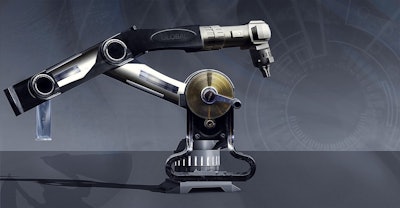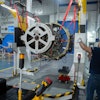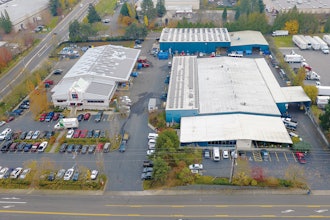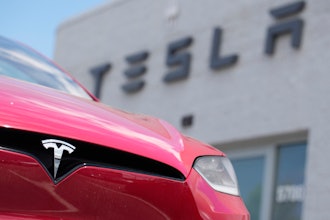
 Nigel Smith
Nigel SmithThe global collaborative robot market is projected to grow from $175.500 million in 2016, to $3,811.483 million by 2021. Manufacturers need to understand the facts before they jump on the cobot bandwagon, as this investment may not be as low-risk as it first appears.
On robotic automation in general, Jay Baron, CEO of the Centre for Automotive Research said, "Without this automation, our factories would have been obsolete a long time ago. Automation is necessary for safety, quality and productivity." This reflects the strong pressure that companies face to implement technology in order to keep up with, or exceed, the competition.
As more companies are turning to robotic automation to get ahead, now is the time to take stock, assess the application and make informed business decisions. Automating manufacturing processes is a complex issue without a one-size-fits-all solution. Some processes call for cobots, a breed of robots designed to share a workspace with human workers, but some really are more suited to traditional industrial robots.
Cobots
The term cobot has been coined to represent an unguarded, easy to integrate collection of robots that typically carry out repetitive or unsafe tasks while the human workforce performs higher-value manual tasks up or downstream. The robotics industry does not acknowledge cobots as a separate entity, but instead defines industrial safety standards for when humans work collaboratively with robots on the same production floor.
This is an important distinction, as new robotics implementers may assume that any cobot is automatically safe for use next to humans, when, in fact, this can only be determined by thorough risk assessment. Some plant managers may be also surprised to discover that they need expensive fencing if risk wasn't appropriately forecasted initially. As a result of risk assessment findings, added safety features can result in very low operating speeds or multiple stops for a cobot. Equally, these necessary safety additions aren't free, adding significantly to integrations costs. Both of these factors have a detrimental impact on return on investment.
Industrial Robots
Industrial robots are automatically controlled and are programmable in three or more axes, and can automate an extremely broad range of processes unattended. Multiple industrial robots can be integrated for a fully automated production line, meaning they can handle applications that are not conducive to humans at speed, removing operators from unsafe or unclean environments.
Improvements in safety technology are now allowing industrial robots to be used in collaborative operations, providing many of the same benefits that a cobot brings, along with increased speed and accuracy. Of course, this collaboration can only be implemented after the appropriate risk assessment — but that is no different than when choosing a cobot. What many are unaware of is that almost any robot is capable of collaborative operation with the appropriate safety mechanisms in place.
Cobot Misconceptions
Remember, it's the application that defines the ability for human and machine to collaborate. While vendors are eager to claim the term 'collaborative robots', it isn't all black and white. In February 2016, the technical standard ISO/TS 15066 was published to provide safety guidelines for the use of robots in collaborative applications, including force guidelines, maximum allowable robot power and speed, without discriminating against a certain type of robot.
Similarly, some manufacturers may buy their cobots assuming they will work without caging. However, they may find their risk assessment shows the need for a safety cage or force limiters to keep human workers safe. The additional charge of these safety features would render the total cost of the cobot similar to that of an industrial robot, but without the additional capabilities of speed and accuracy. Suddenly, this initially low-cost, low-risk investment in cobots isn't turning out as planned.
The huge growth in the cobot market represents the view that cobots can be an ideal first step towards automated processes. If the application doesn't require safety guarding, then the initial investment is low. However, as applications evolve, multiple cobots may soon be required for scalability, and the cost of the additional equipment and additional human workforce will soon exceed the cost of an industrial robot. It’s imperative that business owners assess the application and the needs of their business’ future carefully before making their decision and carefully consider one important question — is a cobot actually what you need?
Nigel Smith is CEO of TM Robotics.






















